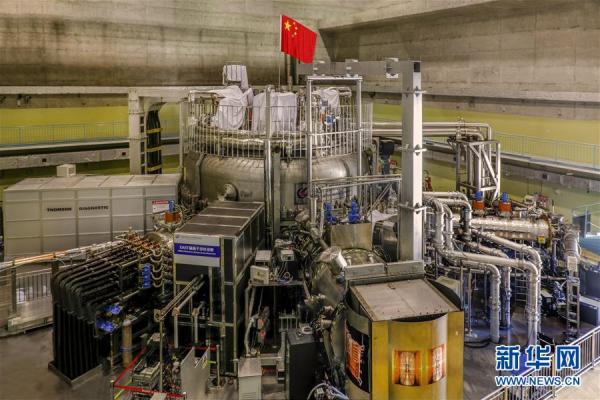


Scientists in China announced they have set a world record by achieving 101.2 seconds of steady-state H-mode operation of the tokamak, an experimental device designed to harness the energy of fusion.
The milestone meant China's Experimental Advanced Superconducting Tokamak(EAST), dubbed "artificial sun," became the world's first tokamak device to achieve the 100-second-level, Hefei Institute of Physical Science under the Chinese Academy of Sciences said Wednesday.
Last year, the EAST team in Hefei, capital of Anhui Province, created a record by achieving over 60 seconds of steady-state long-pulse H-mode discharge of the device.
EAST's steady-state H-mode operation has provided important experimental support for the operation of International Thermonuclear Experimental Reactor (ITER), a large international scientific cooperation project.
More than 30 countries are participating in ITER to build the world's largest tokamak, a magnetic fusion device designed to prove the feasibility of fusion as a large-scale and carbon-free source of energy based on the same principle that powers the Sun and the stars.
 Magnificent view of Nansha Islands in South China Sea
Magnificent view of Nansha Islands in South China Sea Aerial view shows scenery in Hong Kong
Aerial view shows scenery in Hong Kong China builds world’s first offshore fish farm
China builds world’s first offshore fish farm A Foreigner's Chinese Dream and Love for China
A Foreigner's Chinese Dream and Love for China 5,000-year-old Chinese beer recipe goes down a storm in US
5,000-year-old Chinese beer recipe goes down a storm in US World's first driverless rail transit system unveiled in Hunan
World's first driverless rail transit system unveiled in Hunan World's largest cluster of Miao villages in Guizhou
World's largest cluster of Miao villages in Guizhou Daily life in Kashgar, China's Xinjiang
Daily life in Kashgar, China's Xinjiang Top 10 Chinese tech and engineering marvels
Top 10 Chinese tech and engineering marvels Top 10 most sustainable cities in China
Top 10 most sustainable cities in China Top 10 European patent applicants in 2016
Top 10 European patent applicants in 2016 The power of 'She' in China
The power of 'She' in China Seven most beautiful art museums in China
Seven most beautiful art museums in China Sino-Russian partnership solidify amid uncertain ties with US
Sino-Russian partnership solidify amid uncertain ties with US Clash between Chinese and Indian border troops sparks calls for tough response online
Clash between Chinese and Indian border troops sparks calls for tough response online Liaoning designer tells of the hardships faced by the renovation team
Liaoning designer tells of the hardships faced by the renovation team Property market in sales debacle
Property market in sales debacleDay|Week